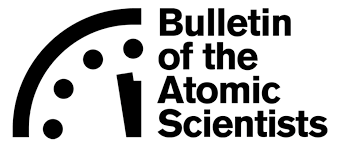 If Russian President Vladimir Putin’s premeditated, illegal attack on Ukrainian cities, towns, nuclear power stations, hospitals, and civilians wasn’t shocking enough, his recent nuclear saber-rattling is a crude reminder that the risk of nuclear war still looms. To respond effectively, those looking for a safer, saner world must rethink the nuclear deterrence policies and practices that have led the nuclear weapons countries to this point and push them toward new approaches and policies that move the world away from nuclear catastrophe.
If Russian President Vladimir Putin’s premeditated, illegal attack on Ukrainian cities, towns, nuclear power stations, hospitals, and civilians wasn’t shocking enough, his recent nuclear saber-rattling is a crude reminder that the risk of nuclear war still looms. To respond effectively, those looking for a safer, saner world must rethink the nuclear deterrence policies and practices that have led the nuclear weapons countries to this point and push them toward new approaches and policies that move the world away from nuclear catastrophe.
“Western countries aren’t only taking unfriendly economic actions against our country, but leaders of major NATO countries are making aggressive statements about our country,” Putin said in a February 27 in a meeting with Russian defense officials. “So, I order to move Russia’s deterrence forces to a special regime of combat duty.”
According to a senior Russian official I have spoken with in recent days, Putin’s statement was probably designed to reinforce his earlier implied threats of nuclear use—threats clearly meant to ward off outside military interference in his attack on Ukraine. Nuclear threats and alerts were not uncommon during the Cold War, before the 1962 Cuban missile crisis and after. But Putin’s overt nuclear saber-rattling is unprecedented—and unacceptable—in the post-Cold War era. Since the Soviet Union dissolved, no US or Russian leader has raised the alert level of nuclear forces to try to coerce the other side’s behavior.
Read the full op-ed, published March 11, 2022, in Bulletin of the Atomic Scientists.
